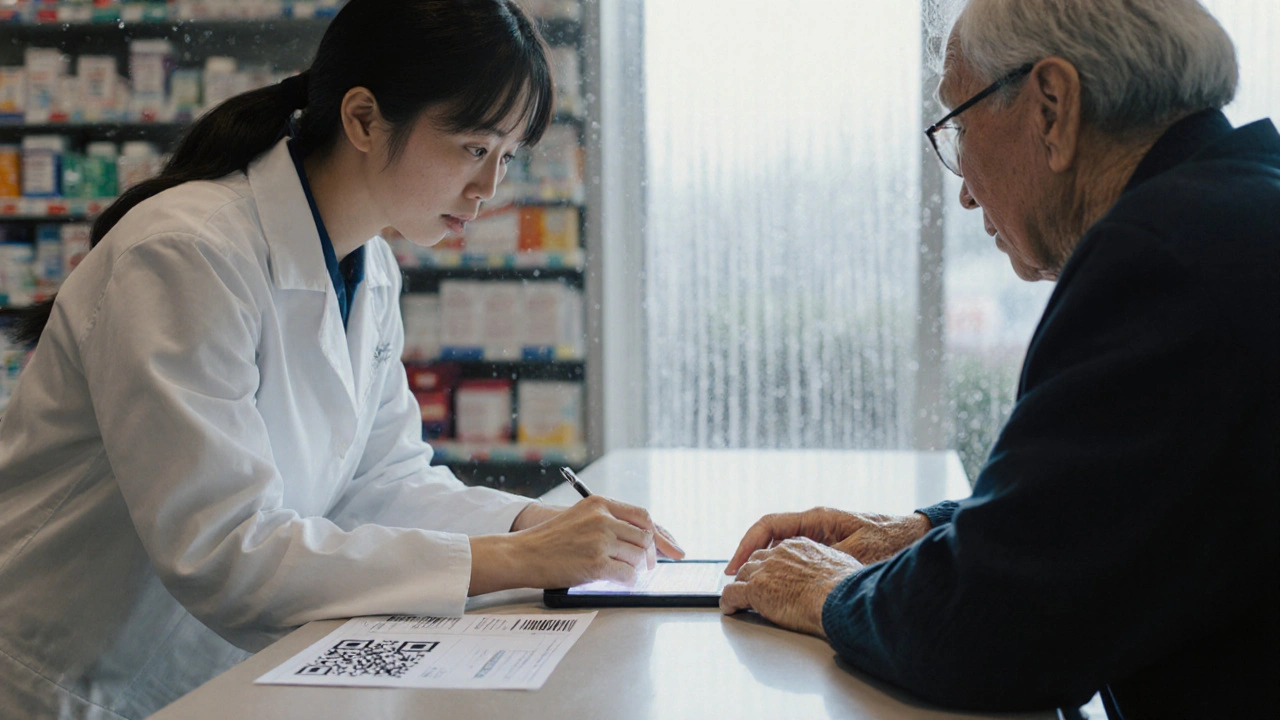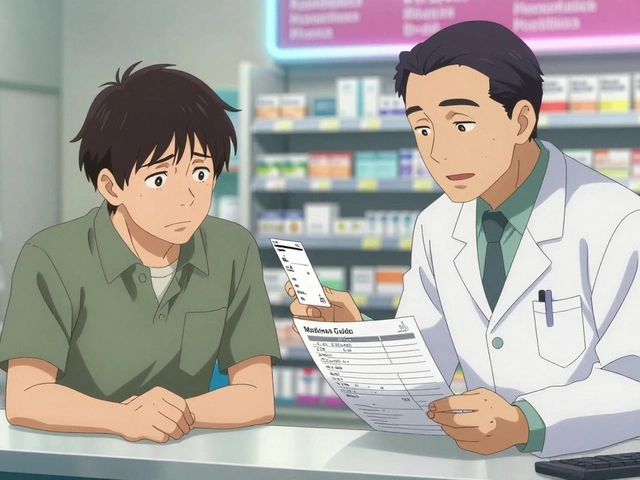
Every year, millions of people in the U.S. take prescription and over-the-counter drugs without issue. But for some, a medication causes an unexpected, harmful reaction. These are called adverse drug events, and they’re more common than most people realize. The problem? Many of these events go unreported - and that means the FDA misses critical clues about drug safety. If you’ve experienced a bad reaction to a medication, reporting it to FDA MedWatch isn’t just helpful - it could save someone else’s life.
What Is FDA MedWatch?
MedWatch is the U.S. Food and Drug Administration’s official system for collecting reports about harmful side effects from drugs, medical devices, and other regulated products. It’s not a hotline for emergencies - it’s a safety net for the public health system. Every report helps the FDA spot patterns that clinical trials might have missed. For example, a drug that seems safe in 5,000 trial participants might cause a rare but dangerous reaction in 1 in 10,000 people. Without real-world reports, that signal stays hidden.MedWatch handles about 1.3 million reports annually. Around 95% of those come in electronically. The system uses standardized medical terminology (MedDRA version 26.1) to organize reports so experts can spot trends. It’s not perfect - experts estimate only 1% to 10% of actual adverse events are reported - but it’s the most important tool we have for catching problems after a drug hits the market.
Who Should Report?
Anyone can report an adverse event to MedWatch - patients, caregivers, pharmacists, nurses, doctors, and even family members. But there are two types of reporters with different rules:- Healthcare professionals (doctors, nurses, pharmacists): Use Form 3500. You’re encouraged to report even if you’re not 100% sure the drug caused the reaction. The FDA just needs to know it happened.
- Consumers and patients: Use Form 3500B. This version is shorter and written in plain language. You don’t need medical training to fill it out.
- Manufacturers and hospitals: Must report serious events by law within 10 days using Form 3500A. They’re required to report even if they’re unsure.
Important note: Don’t use MedWatch for vaccines. Those go to VAERS (Vaccine Adverse Event Reporting System). Animal drug reactions go to the Center for Veterinary Medicine. If you’re unsure, report it to MedWatch anyway - they’ll redirect it if needed.
What Counts as an Adverse Event?
You don’t need to be a doctor to know when something’s wrong. If you took a medication and something unexpected and harmful happened, it’s reportable. The FDA defines an adverse event as any unintended, unfavorable medical occurrence - even if you’re not sure it was caused by the drug.Examples include:
- Severe rash after taking an antibiotic
- Unexplained bleeding on blood thinners
- Liver damage linked to a new OTC painkiller
- Depression or suicidal thoughts after starting a new antidepressant
- Low blood pressure from a blood pressure medication
- Unexpected weight gain or swelling from a diabetes drug
- Reactions to herbal supplements or CBD products
Even if the reaction was mild - like nausea or dizziness - it’s worth reporting if it was new, unusual, or made your condition worse. The FDA doesn’t need proof of causation. They need data.

How to Report: Step-by-Step
There are three ways to submit a report. The easiest and fastest is online.Option 1: Online Reporting (Fastest)
Go to FDA.gov/MedWatch and click “Voluntary Reporting.”Fill out the form. You’ll need:
- Patient info: Age, sex, weight (you can use initials or a medical record number - no Social Security number needed)
- Drug name: Exact brand or generic name, dose, and how often it was taken
- When you started and stopped the drug
- Details of the event: What happened, when it started, how long it lasted, and what happened after you stopped the drug
- Any related lab results or doctor visits
- Your contact info: So the FDA can follow up if they need more details
The form takes about 15 to 20 minutes. You can save your progress and come back later. Once you submit, you’ll get an email confirmation within 21 days. That’s it.
Option 2: Phone Reporting
Call the MedWatch toll-free number: 1-800-FDA-1088. The line is staffed Monday through Friday, 8 a.m. to 10 p.m. ET. You can report as a patient or caregiver. An agent will ask you the same questions as the online form and file it for you. This is helpful if you’re not comfortable using the internet or need help explaining what happened.Option 3: Paper Form
Download Form 3500 (for professionals) or Form 3500B (for consumers) from the FDA website. Print, fill it out, and mail it to:FDA MedWatch
5600 Fishers Lane
Rockville, MD 20857
Mail-in reports take longer to process. If you can, use the online system.
What Happens After You Report?
Your report goes into the FDA’s database - the FDA Adverse Event Reporting System (FAERS). Trained analysts review it along with thousands of others. If the same side effect pops up across multiple reports, the FDA investigates. This could lead to:- A new warning on the drug label
- A black box warning (the strongest warning the FDA can issue)
- A recall or market withdrawal
- Changes to prescribing guidelines
For example, in 2022, over 1,200 MedWatch reports of a rare skin infection called Fournier’s gangrene led to a black box warning for SGLT2 inhibitor diabetes drugs. That warning saved lives.
But here’s the truth: your report alone won’t change anything. It’s the pattern that matters. The more people report, the clearer the signal becomes.
Common Problems and How to Avoid Them
Many people skip reporting because they think:- “It’s probably not serious.” - The FDA doesn’t judge severity. Even minor reactions add up.
- “I’m not sure it was the drug.” - You don’t need to prove causation. Just report the timeline.
- “It takes too long.” - Online reporting takes less than 20 minutes. EHR-integrated systems like Epic or RPMS can cut that to under 10 minutes.
- “My doctor will report it.” - Studies show only about 20% of healthcare providers report adverse events routinely. Don’t assume someone else will.
Another issue: many forms ask for too much medical jargon. The consumer form (3500B) is simpler, but still confusing for some. If you’re stuck, call the hotline. Or ask a pharmacist to help you fill it out.

Why Your Report Matters
In 2021, MedWatch data led to 47% of all drug safety label changes. That’s not a small number. It’s the backbone of post-market safety monitoring.Think of it this way: clinical trials are like testing a car on a closed track. MedWatch is like tracking how that car performs on real roads with real drivers - in all kinds of weather, with different loads, and over time. You’re helping the FDA see the full picture.
And if you’ve been affected by a bad drug reaction, reporting is one of the few ways to turn your experience into something that helps others. You’re not just filing paperwork. You’re becoming part of a safety network.
What’s New in 2025?
The FDA is making improvements. By January 2025, all healthcare facilities will be required to report electronically. A new AI assistant pilot can now auto-fill up to 40% of form fields from electronic health records. The consumer form was updated in 2023 to include specific questions about cannabis-derived products, which have seen a 327% increase in reports since 2020.There’s also a new campaign called “MedWatch Everywhere” - QR codes are now printed on prescription labels at 30 major pharmacy chains. Scan the code, and you’re taken straight to the reporting form. It’s a small change, but it could boost consumer reporting by 15% to 20%.
Final Thoughts
Reporting an adverse drug event isn’t complicated. It doesn’t require medical expertise. You don’t need to wait for your doctor. You don’t need to be sure. You just need to care enough to act.If you or someone you know had a bad reaction to a medication - even if it was months ago - take five minutes to report it. The system works because people like you use it. And every report counts.







11 Comments
Just reported my niece’s severe rash from that new antibiotic last week-took 12 minutes online. Felt weird at first, like I was tattling, but then I remembered: if this helps even one person avoid the same nightmare, it’s worth it. FDA needs real data, not just lab results. Thanks for the clear guide.
Oh please. You people act like reporting to MedWatch is some heroic act. It’s a bureaucratic black hole. I reported my husband’s liver damage from that OTC painkiller last year-got an auto-reply saying ‘thank you for your submission.’ No follow-up. No investigation. No nothing. The FDA doesn’t care. They’re just collecting digital confetti. Stop pretending this does anything.
While I appreciate the effort, I must respectfully dissent from the notion that consumer reports are anything but statistically negligible. In the United Kingdom, we have a far more rigorous pharmacovigilance system under the MHRA, wherein healthcare professionals are legally bound to report, and the data is cross-referenced with national health records. The FDA’s reliance on layperson anecdotes is, frankly, archaic. This system is not a safety net-it is a sieve. The 1% reporting rate is not a failure of public awareness; it is a failure of institutional design.
lol so if i get a headache after taking tylenol i’m supposed to file a federal report? next thing you know they’ll make us report sneezing after eating cheese. also, who even has time for this? my doctor didn’t even mention it. why should i care? 🤷♂️
It’s important to emphasize: MedWatch is not a substitute for emergency care. If you’re experiencing anaphylaxis, chest pain, or sudden neurological deficits, call 911-do not wait to fill out a form. That said, for non-emergent but clinically significant reactions-such as unexplained jaundice, persistent arrhythmias, or psychiatric changes following new medication-this is the single most impactful action a patient can take. The data aggregation is crude, yes, but it’s the only real-world signal we have outside of controlled trials. And yes, you should report even if you think it’s ‘mild.’ Mild reactions are the canaries in the coal mine.
Let’s be real-this whole system is a glorified feedback loop designed to make the FDA look proactive while the pharmaceutical industry quietly buries the data. They don’t want to know about the 500 cases of suicidal ideation linked to that new SSRI-they want you to think you’re ‘helping’ so they can pat themselves on the back. And don’t get me started on the ‘QR codes on prescriptions’ gimmick. That’s not innovation-that’s performative virtue signaling wrapped in a FDA logo. Real change? Ban direct-to-consumer ads. Then maybe we’ll stop having half the population thinking every side effect is a ‘life-threatening emergency.’
My aunt had a terrifying reaction to her statin-swelling, dizziness, couldn’t walk. She was too scared to report it. I did it for her. Took 17 minutes. Didn’t think it mattered. Then, six months later, the FDA issued a warning. Turns out, 37 other people had the same thing. That’s the power of one report. Don’t underestimate it. You’re not just filing paperwork-you’re stitching a safety net. 🇮🇪
my friend took a new migraine med and got this weird metallic taste for 3 weeks. she thought it was just ‘weird’ and didn’t report. then she read this and said ‘wait, that’s exactly what happened to me.’ she filed it yesterday. i think i’m gonna do the same for my weird heart palpitations after the birth control switch. small things matter. 🤍
Look, I get it-reporting feels like shouting into a void. But here’s the thing: the FDA doesn’t need you to be right. They need you to be consistent. One report? Irrelevant. Ten? Maybe a blip. Ten thousand? That’s a headline. I’ve been a pharmacist for 18 years. I’ve seen drugs pulled because of a pattern no one expected. A guy in Nebraska reports ‘mild nausea’ after a new diabetes med. Three months later, someone in Arizona reports the same. Then 17 more. Suddenly, it’s a black box warning. You don’t need to be a doctor. You just need to be the person who didn’t shrug it off. So do it. Even if you’re annoyed. Even if you think it’s dumb. Do it anyway.
Why is this even a thing? I mean, if a drug causes side effects, shouldn’t the company have caught it in trials? Why are we the ones doing their job? And why does the form ask for my pet’s name? No, seriously-it says ‘any other relevant medical history’ and then lists ‘pet allergies’ as an example. I’m not even kidding. This feels like someone’s bad PowerPoint slide turned into a federal form. Also, who has time for this? I’ve got two kids and a dog that eats socks. I’m not filling out a 20-minute form because I got a rash. Send me a link. I’ll click it. But don’t ask me to think.
Just wanted to say thank you for writing this. I reported my dad’s reaction to his blood pressure med last year-didn’t think anything would come of it. Two months later, the label changed to warn about kidney risk in elderly patients. He’s 74. They didn’t test that in trials. But now, every doc knows. That’s why we do this. Not for the system. For the people who come after us. Keep reporting. Even if you’re tired. Even if you’re mad. Even if you think it’s pointless. Someone’s life might depend on it.